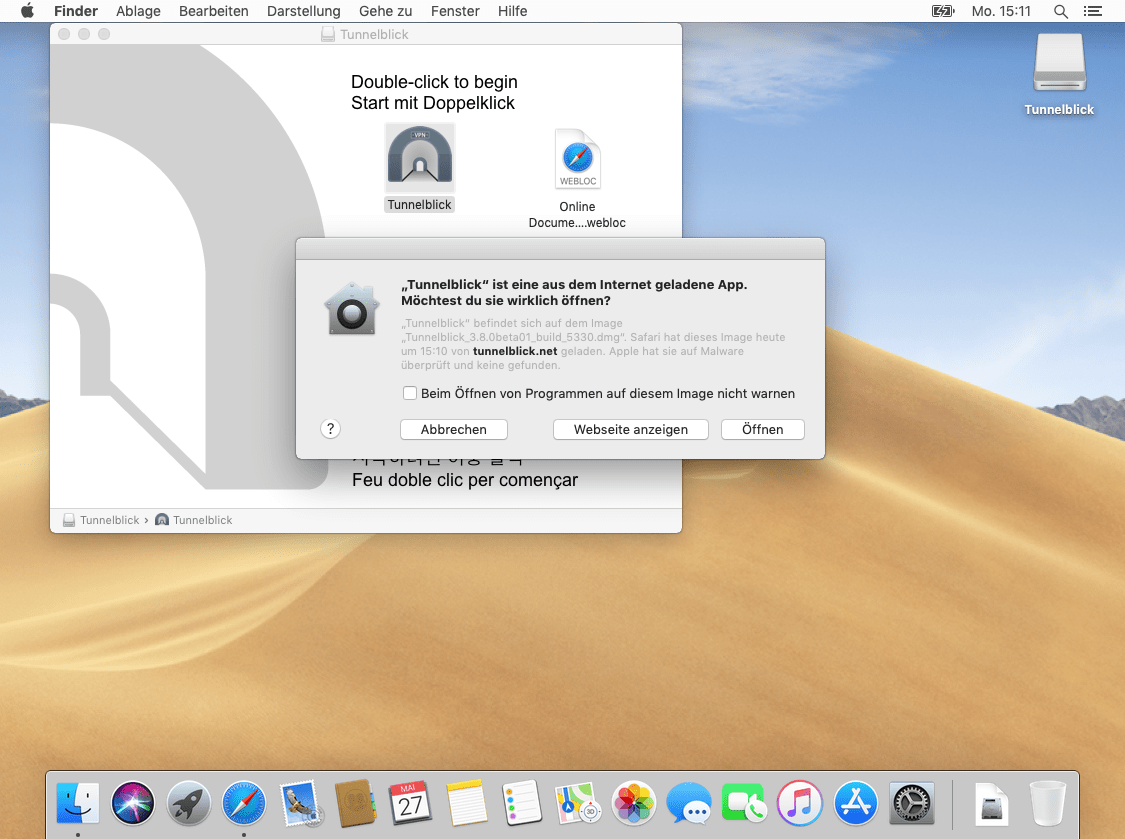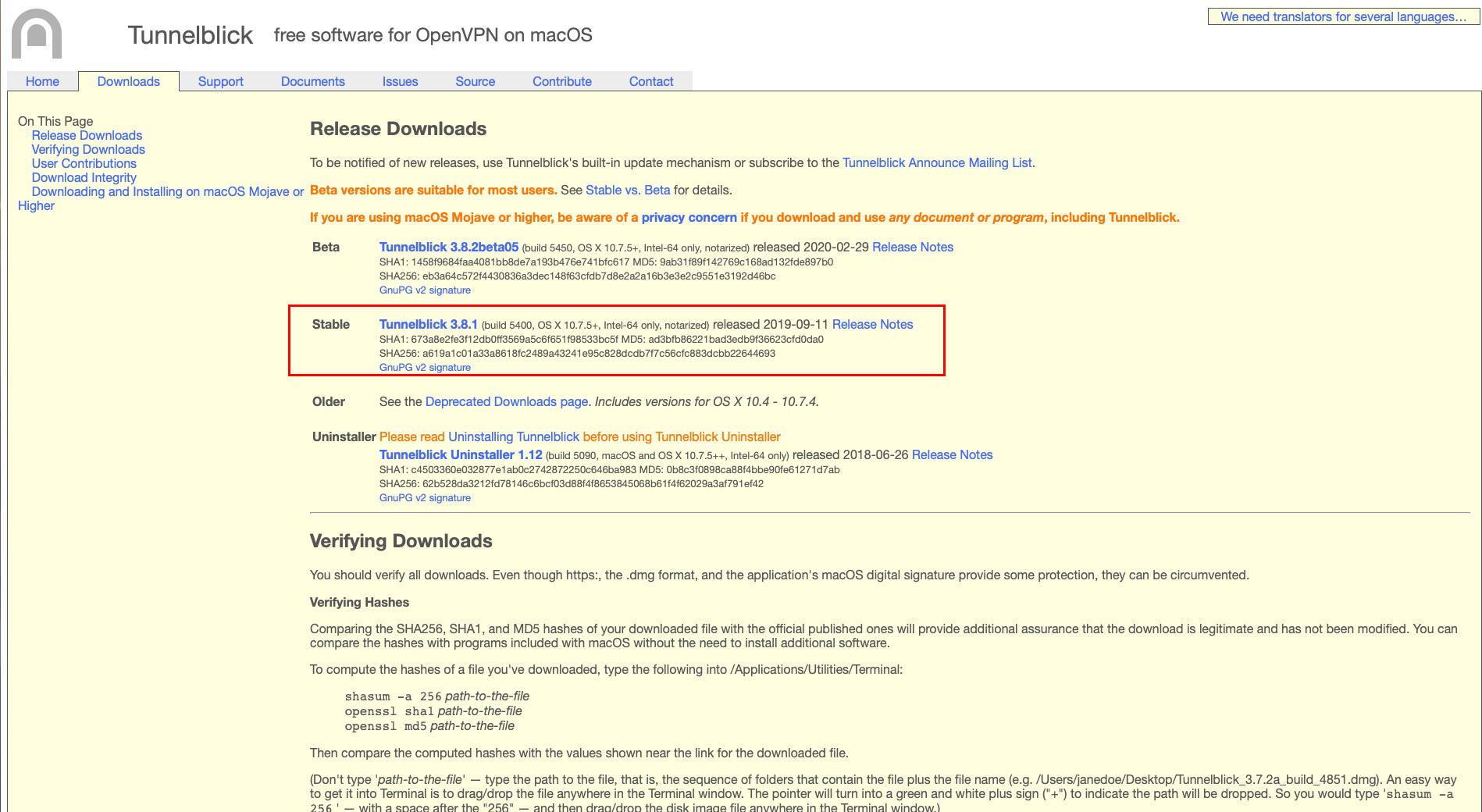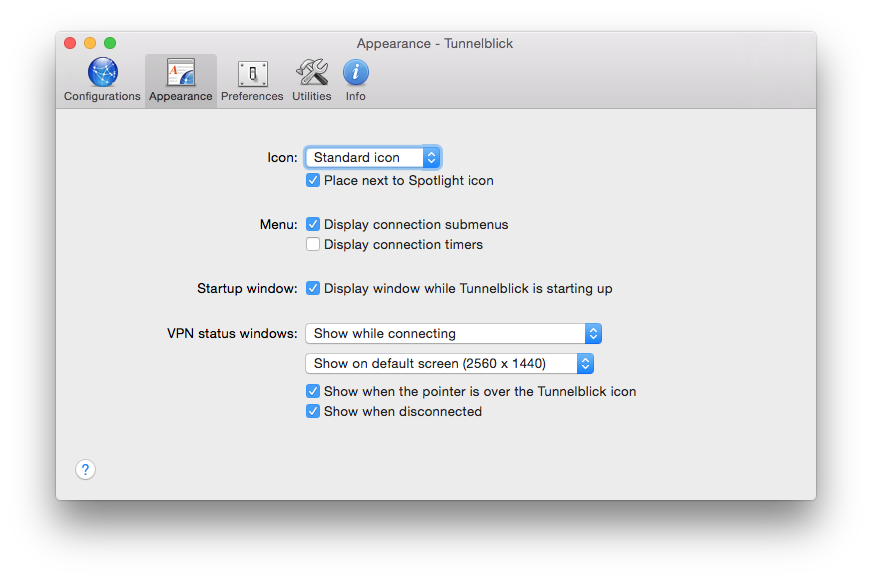This article helps you configure OpenVPN ® Protocol clients.
Before you begin
Tunnelblick is a free, open-source VPN interface that allows you to connect to our network via the OpenVPN protocol. Watch this video to see how to set up OpenVPN on macOS with Tunnelblick, or continue reading for detailed instructions. We are moving to MSI installers in OpenVPN 2.5, but OpenVPN 2.4.x will remain NSIS-only. Compared to OpenVPN 2.3 this is a major update with a large number of new features, improvements and fixes. Some of the major features are AEAD (GCM) cipher and Elliptic Curve DH key exchange support, improved IPv4/IPv6 dual stack support and more seamless.
Note down the public IPv4 address 172.105.102.90 (or IPv6 2600:3c04::f03c:92ff:fe42:3d72) i.e. Public ip address of your OpenVPN server powered by Ubuntu Linux. Download openvpn-install.sh script to set up OpenVPN server in 5 minutes on Ubuntu. How to Set Up OpenVPN client on Windows 10; How to Set Up OpenVPN on macOS (Tunnelblick) How to Set Up OpenVPN client on Android; How to Set Up OpenVPN client on Windows 8/8.1; How to Set Up OpenVPN client on Windows 7; How to Set Up OpenVPN on macOS (Viscosity) See all 7 articles.

Verify that you have completed the steps to configure OpenVPN for your VPN gateway. For details, see Configure OpenVPN for Azure VPN Gateway.
Windows clients
Download and install the OpenVPN client (version 2.4 or higher) from the official OpenVPN website.
Download the VPN profile for the gateway. This can be done from the Point-to-site configuration tab in the Azure portal, or 'New-AzVpnClientConfiguration' in PowerShell.
Unzip the profile. Next, open the vpnconfig.ovpn configuration file from the OpenVPN folder using Notepad.
Export the point-to-site client certificate you created and uploaded to your P2S configuration on the gateway. Use the following article links:
VPN Gateway instructions
Virtual WAN instructions
Extract the private key and the base64 thumbprint from the .pfx. There are multiple ways to do this. Using OpenSSL on your machine is one way. The profileinfo.txt file contains the private key and the thumbprint for the CA and the Client certificate. Be sure to use the thumbprint of the client certificate.
Open profileinfo.txt in Notepad. To get the thumbprint of the client (child) certificate, select the text (including and between)'-----BEGIN CERTIFICATE-----' and '-----END CERTIFICATE-----' for the child certificate and copy it. You can identify the child certificate by looking at the subject=/ line.
Switch to the vpnconfig.ovpn file you opened in Notepad from step 3. Find the section shown below and replace everything between 'cert' and '/cert'.
Open the profileinfo.txt in Notepad. To get the private key, select the text (including and between) '-----BEGIN PRIVATE KEY-----' and '-----END PRIVATE KEY-----' and copy it.
Go back to the vpnconfig.ovpn file in Notepad and find this section. Paste the private key replacing everything between and 'key' and '/key'.
Do not change any other fields. Use the filled in configuration in client input to connect to the VPN.
Copy the vpnconfig.ovpn file to C:Program FilesOpenVPNconfig folder.
Right-click the OpenVPN icon in the system tray and click connect.
Mac clients

Download and install an OpenVPN client, such as TunnelBlick.
Download the VPN profile for the gateway. This can be done from the point-to-site configuration tab in the Azure portal, or by using 'New-AzVpnClientConfiguration' in PowerShell.
Unzip the profile. Open the vpnconfig.ovpn configuration file from the OpenVPN folder in a text editor.
Fill in the P2S client certificate section with the P2S client certificate public key in base64. In a PEM formatted certificate, you can simply open the .cer file and copy over the base64 key between the certificate headers. Use the following article links for information about how to export a certificate to get the encoded public key:
VPN Gateway instructions
Virtual WAN instructions
Fill in the private key section with the P2S client certificate private key in base64. See the Export your private key on the OpenVPN site for information about how to extract a private key.
Do not change any other fields. Use the filled in configuration in client input to connect to the VPN.
Double-click the profile file to create the profile in Tunnelblick.
Launch Tunnelblick from the applications folder.
Click on the Tunnelblick icon in the system tray and pick connect.
Macbook apps download. Important
Only iOS 11.0 and above and MacOS 10.13 and above are supported with OpenVPN protocol.
iOS clients
Install the OpenVPN client (version 2.4 or higher) from the App store.
Download the VPN profile for the gateway. This can be done from the point-to-site configuration tab in the Azure portal, or by using 'New-AzVpnClientConfiguration' in PowerShell.
Unzip the profile. Open the vpnconfig.ovpn configuration file from the OpenVPN folder in a text editor.
Fill in the P2S client certificate section with the P2S client certificate public key in base64. In a PEM formatted certificate, you can simply open the .cer file and copy over the base64 key between the certificate headers. Use the following article links for information about how to export a certificate to get the encoded public key:
VPN Gateway instructions
Virtual WAN instructions
Fill in the private key section with the P2S client certificate private key in base64. See Export your private key on the OpenVPN site for information about how to extract a private key.
Do not change any other fields.
E-mail the profile file (.ovpn) to your email account that is configured in the mail app on your iPhone.
Open the e-mail in the mail app on the iPhone, and tap the attached file
Tap on More if you do not see Copy to OpenVPN option
Tap on Copy to OpenVPN
Tap on ADD in the Import Profile page
Tap on ADD in the Imported Profile page
Launch the OpenVPN app and slide the switch in the Profile page right to connect
Linux clients
Best weather app for macbook pro. Open a new Terminal session. You can open a new session by pressing 'Ctrl + Alt + t' at the same time.
Enter the following command to install needed components:
Download the VPN profile for the gateway. This can be done from the Point-to-site configuration tab in the Azure portal.
Free download iphone music. Export the P2S client certificate you created and uploaded to your P2S configuration on the gateway. Use the following article links:
VPN Gateway instructions
Virtual WAN instructions
Extract the private key and the base64 thumbprint from the .pfx. There are multiple ways to do this. Using OpenSSL on your computer is one way.
The profileinfo.txt file will contain the private key and the thumbprint for the CA, and the Client certificate. Be sure to use the thumbprint of the client certificate.
Open profileinfo.txt in a text editor. To get the thumbprint of the client (child) certificate, select the text including and between '-----BEGIN CERTIFICATE-----' and '-----END CERTIFICATE-----' for the child certificate and copy it. You can identify the child certificate by looking at the subject=/ line.
Open the vpnconfig.ovpn file and find the section shown below. Replace everything between the and 'cert' and '/cert'.
Open the profileinfo.txt in a text editor. To get the private key, select the text including and between '-----BEGIN PRIVATE KEY-----' and '-----END PRIVATE KEY-----' and copy it.
Open the vpnconfig.ovpn file in a text editor and find this section. Paste the private key replacing everything between and 'key' and '/key'.
Do not change any other fields. Use the filled in configuration in client input to connect to the VPN.
To connect using the command line, type the following command:
To connect using the GUI, go to system settings.
Click + to add a new VPN connection.
Under Add VPN, pick Import from file…
Browse to the profile file and double-click or pick Open.
Click Add on the Add VPN window.
You can connect by turning the VPN ON on the Network Settings page, or under the network icon in the system tray.

Next steps
If you want the VPN clients to be able to access resources in another VNet, then follow the instructions on the VNet-to-VNet article to set up a vnet-to-vnet connection. Be sure to enable BGP on the gateways and the connections, otherwise traffic will not flow.
'OpenVPN' is a trademark of OpenVPN Inc.
OpenVPN does not, by default, save usernames and/or passwords, requiring you to enter this information each and every time you connect to a VPN server. While is this good from a security perspective, it can be an annoyance.
Please see below for instructions to change this:
1. Locate the OpenVPN config folder on your computer. Please see below for details pertaining to your operating system / client (if using Mac) for typical file paths:

Openvpn Tunnelblick Installation
- Windows: C:Program Files (x86)OpenVPNconfig
- Linux: /etc/openvpn
- Mac (Using Tunnelblick): ~/Library/Application Support/Tunnelblick/Configurations
- Mac (Using Viscosity): ~/Library/Application Support/Viscosity/Configurations
- 1st line of text file: Enter only your account username
- 2nd line of text file: Enter only your account password
Openvpn Tunnelblick Windows 10
Openvpn Tunnelblick Free




